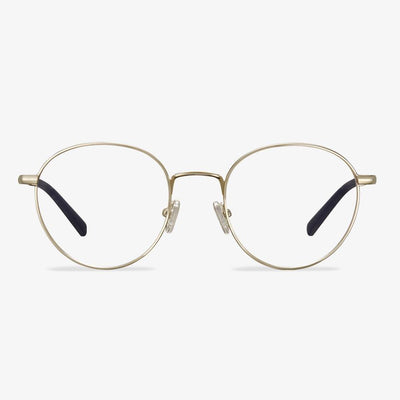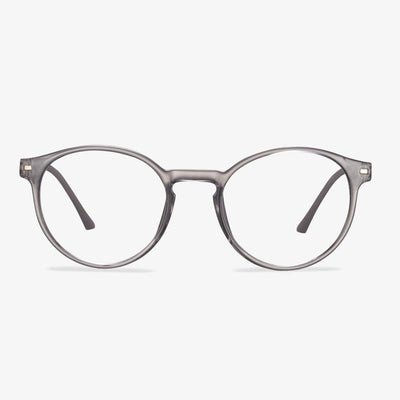Why do spectacle frames rust?
Before solving this problem, we can first understand the causes of rust spots on the frames and skin allergies due to rust spots. Many alloy products in daily life contain nickel, and direct contact with the skin will cause allergies to sensitive people. The temples and nose pads are the parts that contact the skin with a large area, especially the outer surface of the metal frame and the interior of metal containing a large amount of nickel. Through contact with the skin and erosion of sweat, the appearance of rust spots and skin allergies are caused. Once allergy occurs, it will cause contact dermatitides such as redness, swelling, itching, and yellow water on the surrounding skin.
Superlite titanium rimless collection
The SuperLite Titanium rimless series is provided by super strong titanium, stainless steel, and TR90 acetate plastic, combining all the best glasses in the world. Titanium is stronger and lighter than regular metal, making your rimless glasses more durable and comfortable to wear. Rimless glasses, no matter their shape or color, give people an elegant, mature feeling, and you are sure to find your perfect style here. The SuperLite Rimless Series have a very flexible system for rimless glasses from strength to strength with the new model.
Can you use rubbing alcohol to clean glasses?
The stimulus effect of alcohol will damage the coating of the lens. If the coating of the lens is destroyed, the transmittance of the lens will decrease and the clarity of the lens will decrease. In addition, if the film layer of the lens is damaged, the scratch resistance and anti-reflective properties of the lens will decrease. Especially if the film layer of the lens is damaged severely, the lens is easily scratched, which directly affects the vision. Therefore, when cleaning the lens, you must be careful not to use irritating cleaning.
Design principle of progressive multifocal lens
For the same piece of the lens, the top is used to see far, the bottom is used to see close. The upper and lower degrees are different.
There is not a sudden change in the distance degree fixed above the lens to the near degree fixed below the lens, but a gradual transition between the two through gradual changes in refractive power, which has special benefits over common bifocals or trifocal lenses.
Pure titanium spectacle frame
Pure titanium is α-phase titanium containing a certain amount of oxygen, nitrogen, carbon, silicon, iron, and other element impurities. Titanium is an indispensable material for modern aerospace science, marine science, and nuclear power generation, and other cutting-edge science industries. Titanium is 48% lighter than ordinary metals, has strong toughness, acid and alkali resistance, corrosion resistance, high stability, high strength, good elasticity, and other advantages. It is in line with ergonomics. Titanium is non-toxic to the human body and does not have any radiation.
Glasses should not have serious color differences.
Children's eyes are not fully developed, and the eyeball is still growing slowly, at this time it is best not to wear such blue light glasses with the serious color difference. If you always see things with color differences, it will cause eye discomfort, resulting in increased myopia, but the opposite. The big color difference will cause low light transmittance, affecting child macula development. In the case of long-term distortion and discoloration, visual physiology and psychology will be affected.
Blue light glasses for children have special lenses that block some light waves, which may help protect children's growing eyes from digital eye strain. Blue light lenses sometimes have a slight yellow tint. You can buy prescription or non-prescription glasses with child-size frames and lenses that filter blue light. They don't filter out all the blue light, but they can reduce your child's exposure to blue-violet light by 80 percent or more.
How did the eyeglasses market develop?
With the discovery of clear glass paste in the 14th century, lenses became cheaper and easier to sell outside Venice. In the 15th century, the invention of the printing press made it easier to read, which greatly increased the demand for glasses. By the 16th century, frames were made of luxurious materials such as horn, leather, and whalebone. They used real turtle shells. The artificial plastic celluloid was later used to make frames that had never been seen before. In the 1950s, glasses became more popular than ever. Even today, glasses are considered one of the best fashion accessories. Different colors and styles of frames can be made according to the face shape. New technologies for lenses, contact lenses, and even frame materials continue to evolve year after year.











































